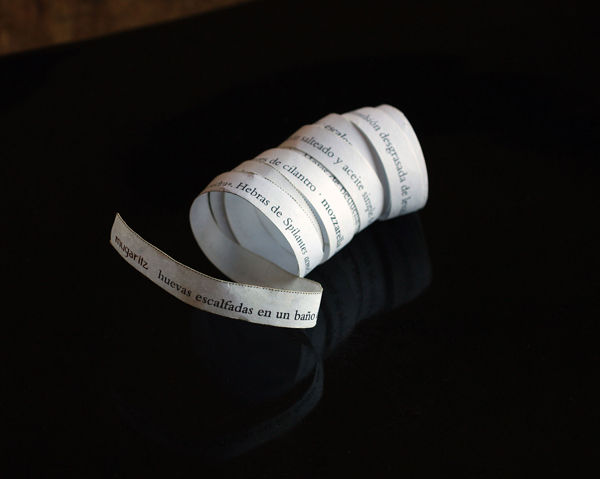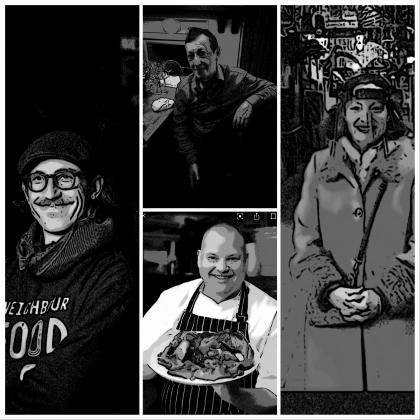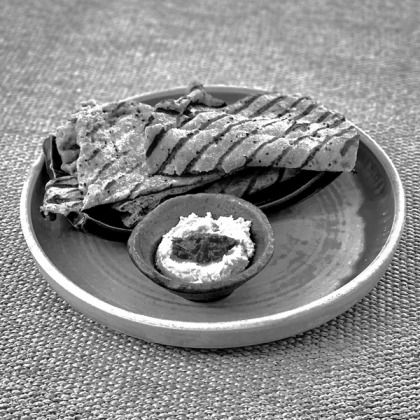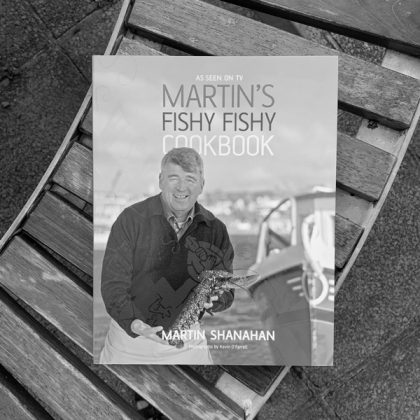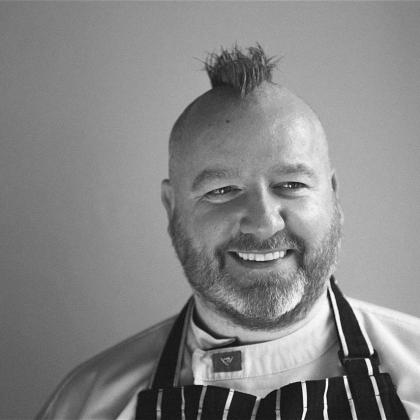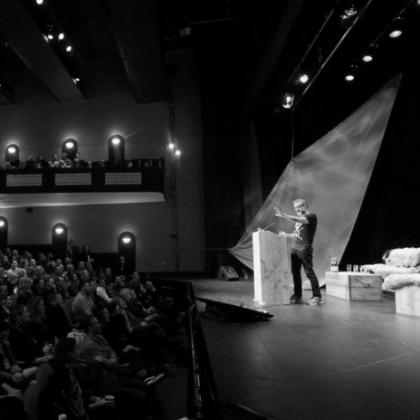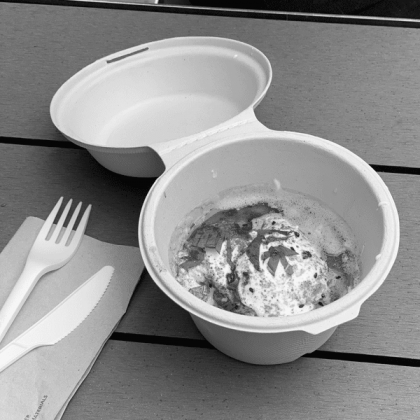“Mugaritz: A Natural Science of Cooking”, by Andoni Luis Aduriz (Phaidon)
It is the 18th of November 2003, and we are on a small bus winding its way into the hills above San Sebastian, in northern Spain. The city’s annual Gastronomica festival has begun, and we are headed for a restaurant we have never heard of: Mugaritz, run by a young man called Andoni Luis Aduriz.
Our friend, the ever-prescient food writer Andrea Petrini, tells us it is his favourite restaurant. We trust Andrea, so we know this isn’t just bravado. But still...
Mr Aduriz greets us as we walk in. He looks absurdly young, though he is in his early 30’s. And he doesn’t look like a cook. His restaurant is splendidly tactile – hessian; wool; wood; iron; tile; muslin are the textures, which suggests it has been decorated on the cheap, by someone with a lot of imagination. “Log cabin” Sally notes in her book.
A little coil of paper, like a wound-up ticker-tape, sits at each place: the night’s menu of 9 dishes. Some of them have been worked on since Mugaritz opened in 1998, so everything represents a work-in-progress.
Tonight’s little foie gras dish, for example, is toasted escalope of foie gras, barely cooked, with a fresh bean and rosemary cream and an emulsion of yeast.
In 1998, the foie gras would have been served cold with a hot consomme of wild and toasted grasses and vanilla and saffron.
In 2000, it was charcoal grilled and served with sea lettuce-infused rice juice.
By 2002, it was very proximate to what is just about to blow our minds: grilled escalope of foie gras with a vegetable and yeast stock, sautéed Japanese artichokes covered with a veil of truffle juice.
When the dish appears in the cookery book, “Mugaritz: A Natural Science of Cooking”, in 2012, it is rendered as escalope of foie gras, charcoal-grilled, accompanied by the slight bitterness of fresh broad beans, mastic resin and red cedar leaves.
Don’t you just love that “slight bitterness of fresh broad beans?” If you do, you will adore Mugaritz, and you will adore the cookery book.
The memory of the meal we ate on November 18th 2003 has never left us. Eating in Mugaritz was not just a culinary experience, and not just a physical experience, it was a metaphysical experience. It was a trip. We hitched a ride on the Muraritz train, moving between its different carriages – the buffalo mozzarella carriage; the foie gras carriage; the lamb carriage; the chlorophyll carriage; the foams carriage; the textures carriage; the baby squid carriage; the laughter carriage; the costal herbs carriage; the flower carriage. And when we arrived, we weren’t quite the same.
It would be wrong to say too much about “Mugaritz: A Natural Science of Cooking”. It is such a singular book that one wants everyone who loves food to have it, and to react to it in a very personal way. Like the best books about food, it will change the way you look at, and think about, food. This trip will blow your mind.
“Mugaritz: A Natural Science of Cooking”, by Andoni Luis Aduriz (Phaidon)

